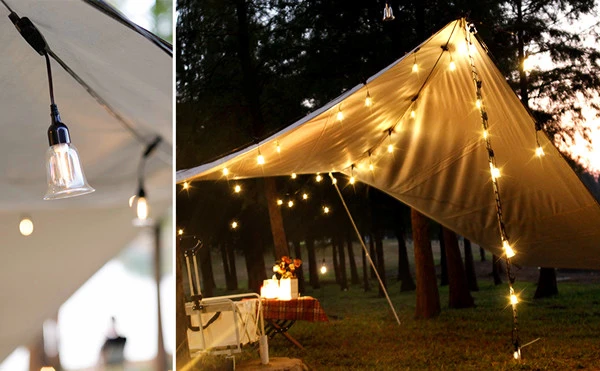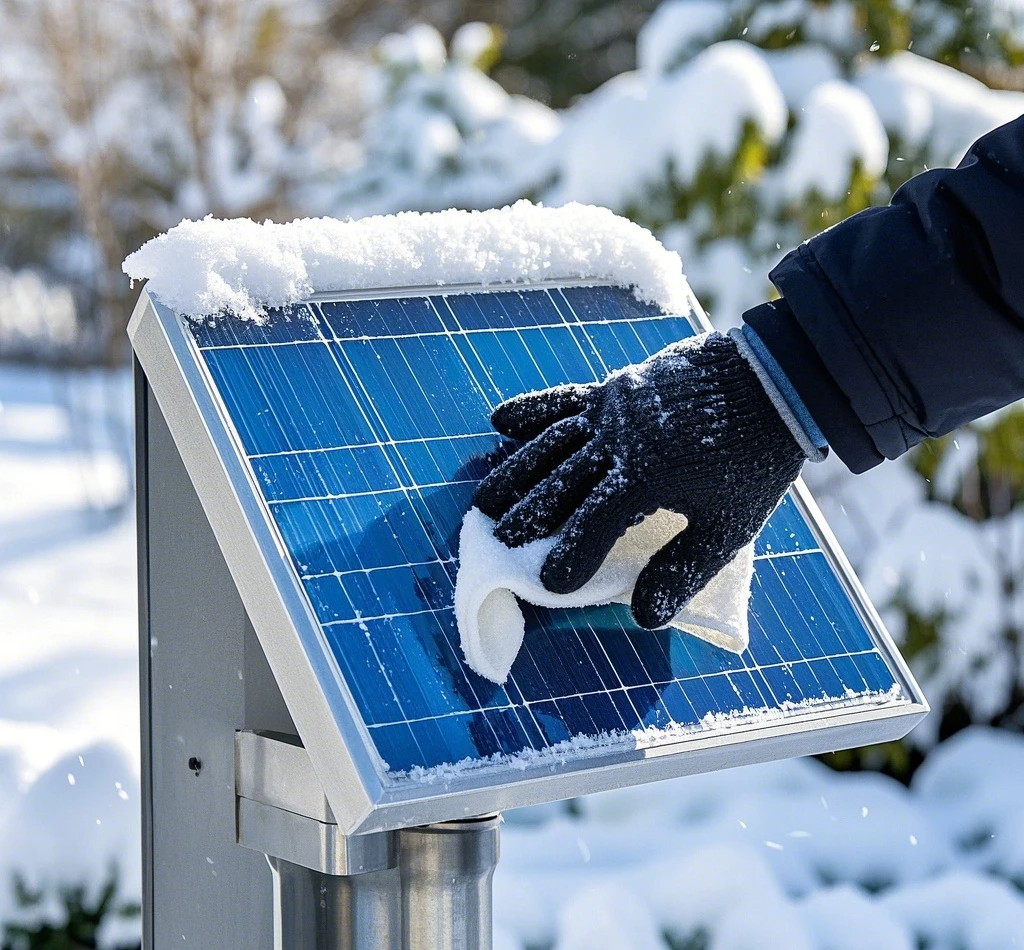Solar lights are a brilliant blend of sustainability and practicality, illuminating gardens, pathways, and patios with energy drawn straight from the sun. Their eco-friendly design eliminates electricity costs and reduces your carbon footprint, making them a favorite for outdoor lighting. However, winter poses unique challenges: shorter days, weaker sunlight, and colder temperatures can dim their glow if you’re not prepared. Fear not—this enriched guide offers a detailed, layered approach to optimizing your solar lights during the winter months. Beyond the basics, we’ll explore the science behind their performance, provide actionable strategies, and share preventative tips to ensure your outdoor spaces remain beautifully lit even on the darkest, frostiest nights. Whether you’re decking out your yard with festoon solar lighting or securing a driveway with motion sensors, these expert insights will keep your solar lights shining brightly all season long.

Understanding Winter’s Impact on Solar Lights
Before diving into the tips, it’s worth understanding why winter tests solar lights. The season brings fewer daylight hours—sometimes as little as 8 in northern regions—coupled with a lower sun angle that reduces solar intensity. Add in overcast skies, snow, and subzero temperatures, and the photovoltaic (PV) panels and batteries face a tougher job. A typical solar light might harvest 30–50% less energy in winter compared to summer, shortening runtimes or dimming output. This guide tackles these challenges head-on, offering practical solutions to maximize efficiency and maintain that warm, inviting glow through the cold months.
Let’s explore five enriched tips, each expanded with detailed advice, real-world applications, and proactive measures to elevate your solar lighting game this winter.
1. Maximize Sunlight Exposure: Positioning for Peak Harvest
Winter’s abbreviated daylight and low sun trajectory mean every photon counts. To get the most out of your solar lights, strategic placement is key. Position the solar panels where they’ll bask in uninterrupted sunlight for the longest possible duration—typically south-facing spots in the Northern Hemisphere. Avoid areas shadowed by evergreen trees, tall buildings, or fences, as even partial shade can slash energy capture by up to 40%. For example, a panel under a leafless deciduous tree might thrive in winter, while one near a conifer could struggle.
Take it a step further: observe your yard at midday (when sunlight peaks) over a few days to map the sun’s path, accounting for seasonal shifts. Tools like a smartphone app (e.g., Sun Seeker) can pinpoint optimal locations. If your lights are portable—like festoon strings or stake lights—relocate them as needed. For fixed installations, consider temporary mounts to dodge new shadows from snow-laden branches or holiday decorations. This proactive positioning ensures your lights soak up every available ray, powering them through the long winter nights.

2. Keep Solar Panels Clean: Clear the Way for Efficiency
A pristine solar panel is your light’s lifeline, but winter throws plenty of obstacles its way—snow, ice, dust, and debris like fallen leaves or bird droppings. Even a thin layer of grime can block 20–30% of sunlight, choking energy production and leaving your lights dim or dormant. Regular maintenance is non-negotiable: check your panels weekly, especially after storms, and clean them gently with a soft cloth or sponge dipped in warm water mixed with a drop of mild dish soap. Avoid abrasive tools (e.g., steel wool) that could scratch the protective coating, and steer clear of cold water on icy panels to prevent thermal shock.
For snowy regions, brush off accumulations with a soft broom—never chip ice, which risks cracking the panel. In dusty or urban areas, a monthly wipe-down prevents gradual buildup. After cleaning, dry the panel with a lint-free cloth to avoid water spots that could refract light. Real-world tip: one homeowner found their lights tripled in brightness after clearing a dusting of snow, proving how small efforts yield big results. A clean panel isn’t just functional—it keeps your setup looking sharp amidst winter’s bleakness.
3. Adjust the Tilt of the Solar Panel: Capture the Low Winter Sun
The sun’s angle drops dramatically in winter—sometimes below 20 degrees above the horizon—reducing the effectiveness of flat or summer-optimized panels. If your solar light features an adjustable panel, tweak its tilt to match this lower trajectory, typically between 45–60 degrees from horizontal, depending on your latitude (steeper the farther north you are). This adjustment can boost energy capture by 25–35%, as it aligns the panel perpendicular to the sun’s rays, maximizing absorption during scant daylight hours.
For fixed panels, get creative: prop them with a weatherproof wedge (e.g., a wooden block sealed with silicone) or mount them on an angled bracket. Test the impact—tilt a panel and compare its runtime to an unadjusted one after a full day’s charge. The difference can extend illumination from a meager 4 hours to a robust 8. Festoon lights draped across a pergola? Angle the panel atop the structure rather than letting it lie flat. This small tweak turns winter’s weak sunlight into a powerful ally, keeping your lights aglow longer.
4. Use High-Quality Batteries: Power Through the Cold
Cold weather is a battery’s nemesis, slowing chemical reactions and reducing capacity—lithium-ion batteries can lose 20% efficiency below freezing, while nickel-metal hydride (NiMH) fare slightly better but still falter. To combat this, ensure your solar lights use top-tier rechargeable batteries designed for low temperatures. Look for high-capacity options (e.g., 2000mAh or higher) with a proven track record—brands like Panasonic Eneloop or Ansmann often outperform generics. If your lights dim prematurely despite a full charge, it’s time to swap out old batteries; most last 1–2 years, though winter strain can shorten that.
Upgrade tip: opt for lithium-ion over NiMH if your light supports it—they handle cold better and hold charges longer. Store spares in a cool, dry indoor spot (not freezing) to preserve their potency, and install them fully charged. After replacement, give the light a day in direct sun to calibrate the new cells. This investment ensures your lights don’t just survive winter—they thrive, delivering consistent brightness when you need it most.
5. Switch to Winter Mode or Reduce Operating Hours: Conserve Energy Wisely
Winter’s limited solar input demands smarter energy management. Many modern solar lights offer a “winter mode” or low-power setting that dims the LED or shortens runtime to stretch the battery’s charge—perfect for nights exceeding 14 hours. If your model has this feature, activate it via the switch or app (for smart lights) and test its output; it might drop from 100 lumens to 50 but still light a path effectively. No winter mode? Manually adjust settings—reduce motion sensor duration from 30 seconds to 10, or set dusk-to-dawn lights to shut off by midnight.
For festoon lighting or decorative strings, consider a hybrid approach: run them for 4–6 hours at dusk, then let them rest, preserving energy for the next cycle. Use a timer if available, or cover the panel briefly to reset the cycle. This conservation strategy mimics nature’s rhythm—less light when it’s least needed—ensuring your setup glows reliably without draining reserves. Bonus: it doubles as a power-saving habit year-round.
Beyond the Basics: Winter-Proofing Your Solar Lights
These five tips form the core of winter optimization, but a few extra steps can elevate your success:
- Insulate Battery Compartments: In extreme cold (below -10°C), wrap the battery area with weatherproof foam tape (leaving ventilation) to shield it from frost, boosting efficiency by 5–10%.
- Seasonal Relocation: Move portable lights closer to the house where reflected light from windows or snow might supplement solar input.
- Pre-Winter Checkup: Before the first frost, inspect seals for cracks, tighten loose panels, and replace aging batteries to preempt failures.
The Payoff: A Winter Lit with Purpose
Optimizing your solar lights for winter isn’t just about functionality—it’s about crafting a cozy, sustainable ambiance. Picture festoon solar lights twinkling over a snow-dusted patio, or a spotlight guiding you safely down an icy path. Each tip builds resilience: maximized exposure fuels longer nights, clean panels ensure peak efficiency, tilted angles harness faint rays, quality batteries defy the chill, and smart settings stretch every watt. Together, they transform winter’s gloom into an opportunity for eco-friendly brilliance.
Why It Matters: Sustainability in Action
Winter-ready solar lights do more than illuminate—they embody a commitment to green living. By maintaining them, you cut reliance on grid power, saving roughly 0.5 kg of CO2 per light annually, per the National Renewable Energy Laboratory. That’s a small but tangible dent in emissions, multiplied across your yard. Plus, their cost-effectiveness shines through: no wiring, no bills, just sunlight turned into magic.
Shine Through the Season
With these enriched strategies, your solar lights will defy winter’s challenges, casting a warm, welcoming glow over your outdoor spaces. From fine-tuning panel angles to swapping batteries, each step is a small act of care that pays off in brightness and longevity. So, bundle up, grab a cloth and screwdriver, and tend to your lights—they’ll reward you with a season of sustainable sparkle. How will you light up your winter? We’d love to hear your glowing success stories!

Comments